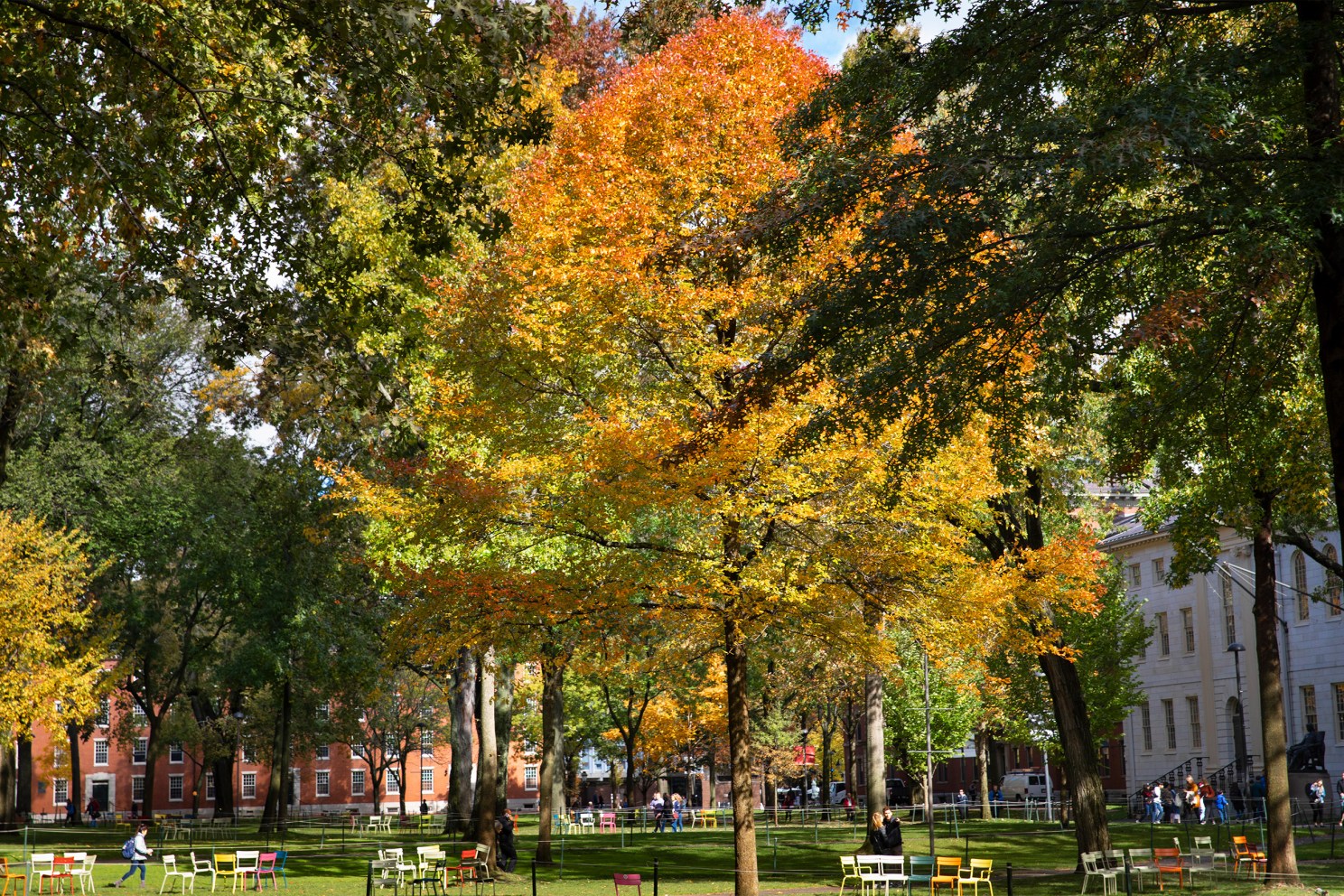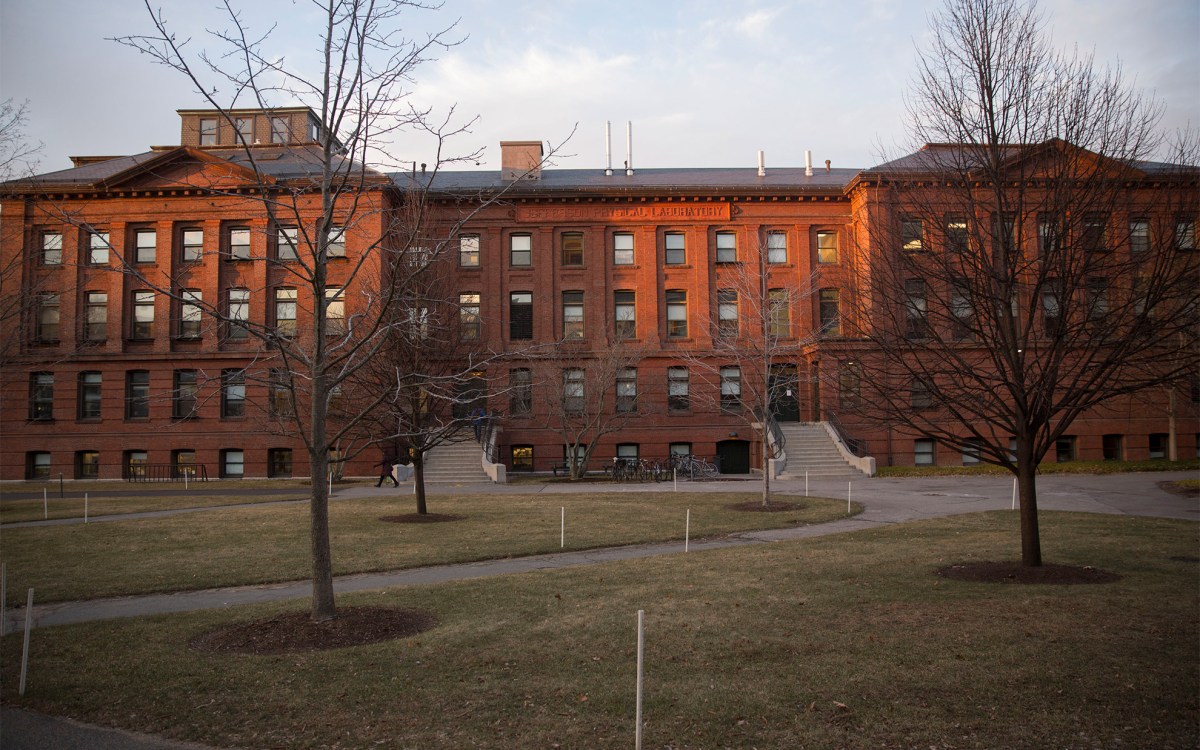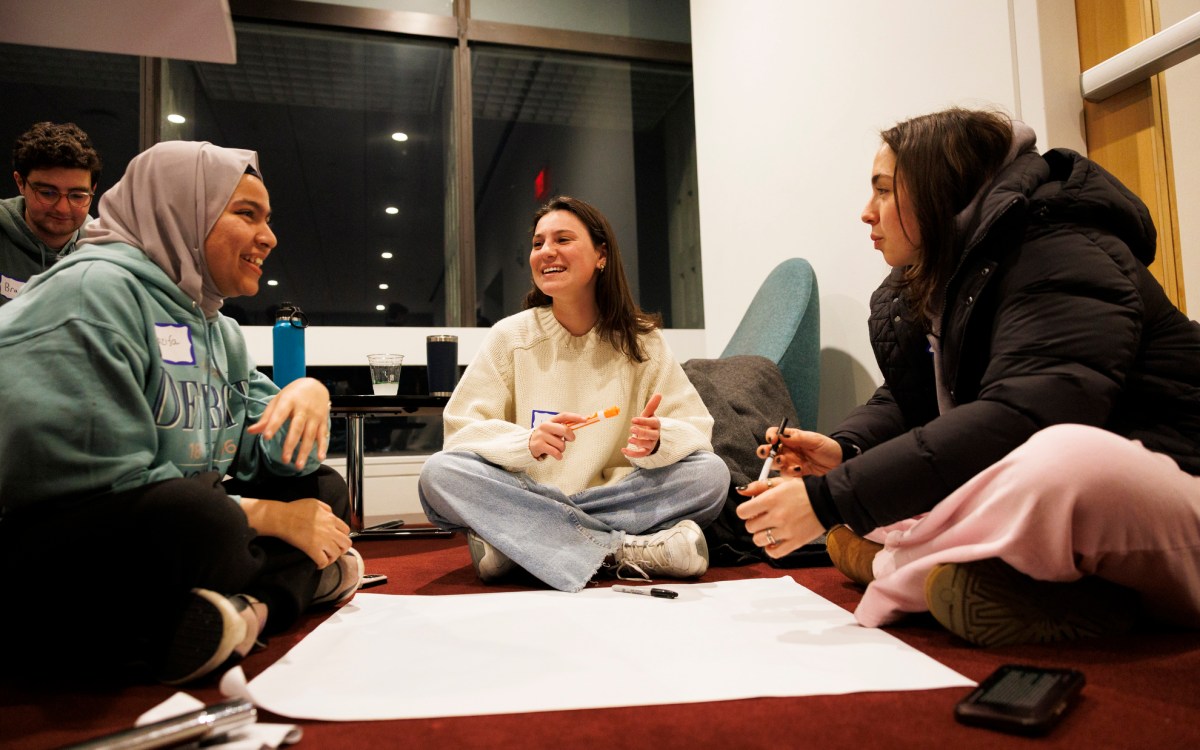
File photo by Kris Snibbe/Harvard Staff Photographer
Harvard releases race data for Class of 2028
Cohort is first to be impacted by Supreme Court’s admissions ruling
Harvard College has released data related to the racial and ethnic makeup of the Class of 2028, the first class whose admission was impacted by the Supreme Court’s 2023 decision striking down the ability of colleges and universities to consider race and ethnicity as one factor among many in the admissions process.
Of students who identified their race, 14 percent identified as African American or Black, a decrease from 18 percent in Class of 2027 data. Thirty-seven percent of students identified as Asian American, representing no change from the year prior. Sixteen percent of students identified as Hispanic or Latino, up from 14 percent the previous year. One percent of students identified as Native American, a decrease of 1 percent from the previous year. Fewer than 1 percent identified as Native Hawaiian or other Pacific Islander, reflecting no change.
“We have worked very hard for many decades to ensure that students from every background come to Harvard and make a difference to their fellow classmates, the nation, and the world. We will continue to fulfill our mission, even as we continue to follow the law with great care,” said William R. Fitzsimmons, dean of admissions and financial aid.
The demographics, accessible only after the admissions process was completed, provide a first understanding of the impact of the Supreme Court ruling on the composition of the undergraduate student body at Harvard. The University defended race-conscious admissions for nine years — first in U.S. District Court and then before the U.S. Court of Appeals for the First Circuit, both of which ruled in Harvard’s favor. The Supreme Court, in vacating those rulings, set aside 40 years of legal precedent.
“We know the value of diversity in creating a wide range of perspectives that advance learning,” said Fitzsimmons. “Our community is strongest when we bring together students from different backgrounds, experiences, and beliefs. And our community excels when those with varied perspectives come together — inside and outside of the classroom — around a common challenge by seeing it through another’s perspective.”
Eight percent of students in the Class of 2028 did not disclose race or ethnicity, compared with 4 percent last year. International students make up 16 percent of the class, an increase from 15.2 percent last year. First-generation students represent 20.1 percent of the class; 20.6 percent of students qualified for federal Pell grants. The class has 19 veterans. Thirteen transfer students also enrolled this fall, including two veterans.
With the goal of building a diverse pipeline of potential applicants and lowering barriers to a Harvard College education, the Office of Admissions and Financial Aid has continued to enhance efforts in recruitment and financial aid. Last summer, it reorganized the supplemental essay portion of the application with a consistent set of short essay questions for all applicants to reflect on their personal experiences, and it has increased recruitment travel programs and outreach to school counselors and community-based organizations. The new STORY (Small Town Outreach, Recruitment, and Yield) consortium of public and private university admissions officers traveled to several rural communities in the South and Midwest last fall.
“We have always been committed to finding exceptional talent across many communities and recruitment remains an important tool in building a robust and diverse applicant pool,” said Director of Admissions Joy St. John.
Efforts to increase financial aid have also continued, including the establishment of a launch grant that gives students receiving full financial support $2,000 in the fall of their junior year to help with costs associated with the transition to post-Harvard life. In March 2023, Harvard College raised the threshold for full financial aid for students whose families’ annual income was below $85,000. Nearly 25 percent of students in the Class of 2028 attend Harvard with no parent contribution, and the average parent contribution for the 55 percent of the student body receiving aid is $15,000. No loans are required, and all students can graduate debt-free.




